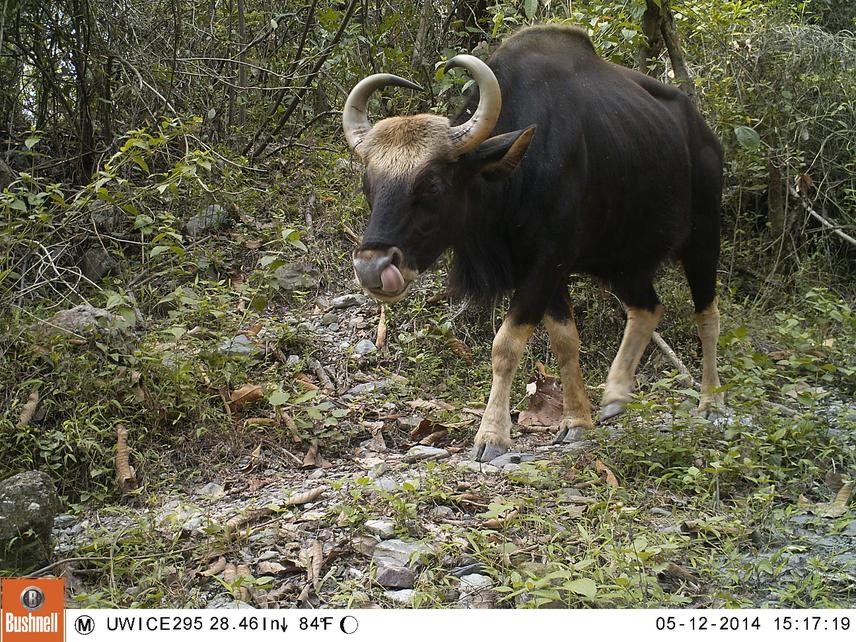Pelden Zangmo
Gaur (Bos gaurus) is classified Vulnerable in the IUCN Red List since 1986. It is placed in appendix-I of Conservation of International Trade in Endangered Species (CITES).Gaur is one of the many endangered species found in Royal Manas National Park (RMNP), but no study has been carried out for the species. First of its kind, the study will determine distribution, potential habitats and major threats of concern for Gaur. To be executed between the elevation ranges of 150 to 2676 masl in two park ranges, the results will help prioritize conservation measures for gaur in RMNP.

Gaur is listed as Vulnerable in the IUCN Red List since 1986 (Duckworth et al., 2016). The global estimated population of gaur is only 30,000. Moreover, today the distribution range of the species is highly fragmented and the studies have revealed that gaur is regionally extinct in Sri Lanka and Cambodia while gaur in Bangladesh is believed to be at the verge of extinction. Similarly, Gaur habitat in Bhutan abuts with Indian boundary to the south and this poses serious threat to the least studied gaur population of Bhutan.
First of its kind, the Gaur abundance will be determined through camera trapping method while gaur occurrence and distribution will be determined through camera trapping method, direct sighting and in-direct signs. The suitability of habitat for Gaur will be determined by various factors like the vegetation structure, availability of water and salt licks, and most importantly the interaction with other animals.
Conservation threats to Gaur like human encroachment into wildlife habitat, prevalence of wildfire will be assessed from field survey works while predator-prey relationship will be assessed both through camera trap events and direct field survey. Thus, the conservation awareness programme will be delivered to the communities residing within the park after assessing the threats.
Through intensive field surveys, the study will map all the sites where gaur occurs in RMNP and key characteristics of the habitat will be identified, which will help conduct the study on gaur other parts of the country in the future.